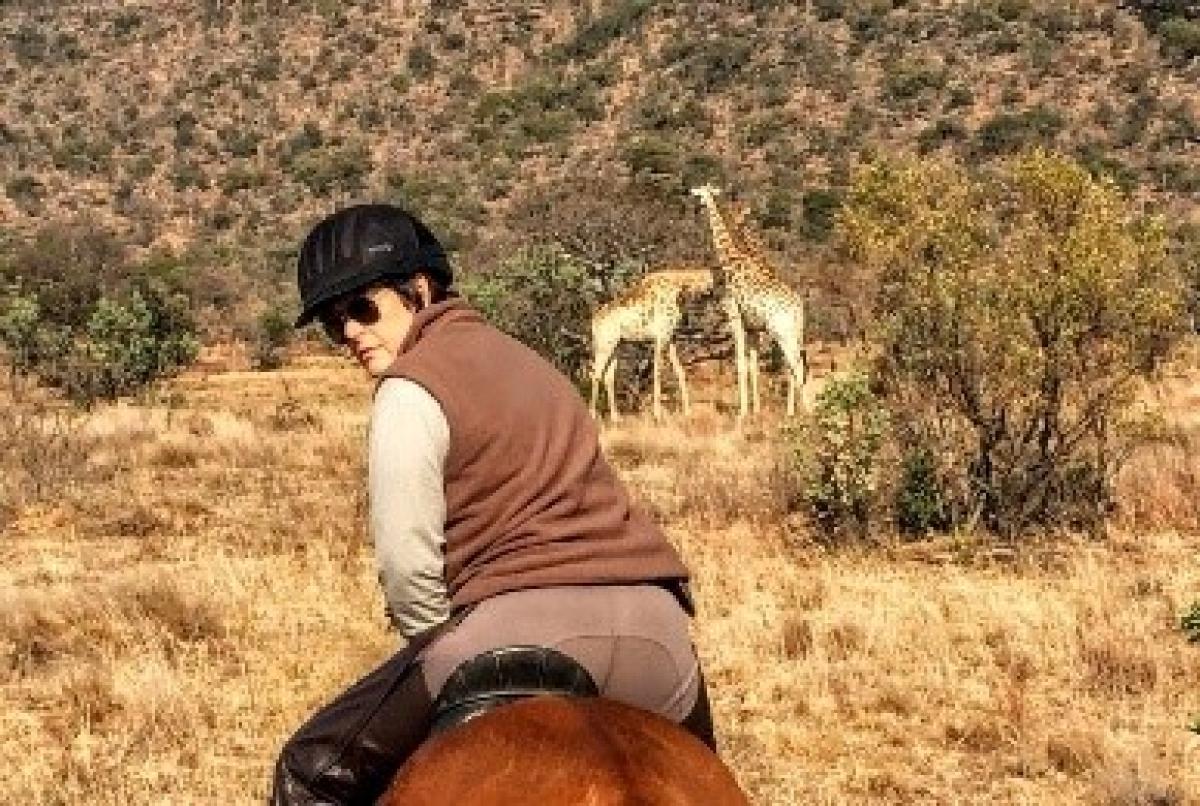Helmets: Advancements in Safety and Comfort for Equestrianism
Helmets are made from different materials and colors, but they vary very little within the same shape. Technological materials and collaboration among equestrian tourism associations, standardization institutes, and manufacturers have transformed riding helmets into something more anatomical, lighter, better ventilated, more comfortable, and safer as well.

I'll start by warning you that I'm going to address a controversial topic! Maybe I shouldn't even tackle this subject if I had any sense! Probably, I will say what I shouldn't!
But, here we go... Let's address the subject and the controversy. The Helmet, or "casco," as it is often called.
See what I wrote in my book – RIDING HORSES: A STEP-BY-STEP GUIDE – about the subject:
Helmets are made from different materials and colors, but they vary very little within the same format.
Technological materials and collaboration between equestrian tourism associations, standardization institutes, and manufacturers have transformed the riding helmet into something more anatomical, lighter, better ventilated, more comfortable, and safer as well.
It is a personal safety equipment that is mandatory in many of the horseback riding travel programs offered around the world.
Regardless of the need to comply with the laws in each country and the rules of each operator, there is consensus on the advantages of the mandatory use of helmets in preventing more severe injuries in case of falls and head trauma. It would prevent the penetration of objects and reduce and diffuse the impact over larger and less pinpointed areas.
Different organizations have developed standard specifications for the manufacture of helmets. The most well-known and respected standards are: EM 1384 (British Standards Institute), PAS 015 (Product Approval Specification BY BSI), ASTM/SEI F1163 (American Society for Testing Materials), and SNELL E 2001 (Snell Institute).
Whether to wear a helmet or not is no longer a matter of discussing its necessity and effectiveness, but rather a matter of personal preference and choice.
In some countries, there is still the possibility of not using a helmet without major consequences.
In others, it is necessary to sign a form accepting responsibility for not using it.
And in a vast majority of destinations, there is not even that option of refusal. Most insurance companies require the use of a helmet.
The photographs published on websites and in specialized magazines somewhat confuse the reader, as they frequently show riders galloping in beautiful landscapes wearing only cowboy hats. International operators, despite also showing photographs of people without helmets on their websites and in catalogs, are extremely direct in reinforcing the necessity and, in many cases, the obligation to wear helmets during the offered programs.
International requirements regarding safety standards are extremely strict, and disobedience to them is subject to legal actions and serious penalties. Thus, in most destinations, helmets are made available to clients, although they warn that bringing your own helmet would be the best option for anatomical fit and, consequently, greater comfort and safety.
The rules and requirements in Latin American countries as a whole are no less strict, but the flexibility in their use and enforcement is very broad. In Brazil, the rules governing equestrian tourism activities were established by ABNT (Brazilian Association of Technical Standards) through NBR 15507-1:2008 and NBR 15507-2:2008. There is a reference to the use of helmets in item (7.3), which deals with "the client's clothing and accessories." It states that:
“The organization must ensure that the client dresses appropriately, which includes the use of... c) head covering (such as, for example, equestrian helmet, hat, or cap); d) equestrian helmet for minors under 18 years old unaccompanied by a legal guardian.” It is recommended that an equestrian helmet be used by all clients. To this end, the organization must provide and offer such helmets. “The organization may allow the client to bring their equestrian helmet, which does not exempt it from the obligation to assess its conformity and suitability, as well as to eventually recommend that the client choose the equestrian helmet being offered.”
If you are one of those who, for personal reasons, do not use an equestrian helmet during rides, make sure to confirm with the agency or operator the obligation to use one during the desired program.
And, considering the possibility that its use may not be mandatory, hire an insurance company that covers occurrences regardless of the use of the equipment.
What can I say to you now!
Here on the viajaracavalo website and on its social media – you will be able to see through the photos of my trips that I do not wear a helmet. And many of my clients do not wear one either. Even those who are international.
I have one that I bought in the hope of really wanting to visit a destination where using that equipment is mandatory.
I don't want to be an example or advocate against its use, as I am aware of its benefits, especially when associated with cervical protection vests.
But I have some very strong convictions about the subject that revolve around personal freedom, spontaneity, and naturalness involved in life's pleasures, my roots, and a somewhat anarchic view of life that does not allow for so many rules in all aspects of it.
For me, horseback riding is about freedom.


